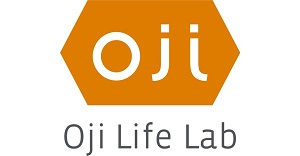ATD Blog
Emotional Intelligence Training: Where to Begin
Thu Nov 10 2022

The COVID-19 pandemic has left an indelible mark on work culture. To navigate the changes it’s brought to our culture and organizations, the old management playbooks must be thrown out.
In the last couple of years, tens of millions of employees have left their jobs, making this the Great Resignation era. Data also indicate that millions of employees are mentally checked out from their jobs: Gallup estimates at least 50 percent of the workforce are “quiet quitters.” A key reason for these trends comes from another Gallup statistic, which the organization calls its “most profound finding ever.” Team engagement is 70 percent determined by how well a manager relates to their employees. To amplify this point further, a study conducted by the Pew Research Center in 2021 found that 57 percent of employees who quit did so because they felt disrespected at work.
Data like this—as well as leaders’ own experiences—are leading many organizations to the same conclusion: We need emotional intelligence (EI) training. But most are grappling with another question: Where do we begin?
EI Training Advice From Amazon and J&J
In a recent ATD webinar that I hosted—Mastering Emotional Intelligence Training With J&J and Amazon—L&D leaders from both companies shared advice on how to successfully roll out EI training at an organization. Below are their expert tips.
Tip #1: Run a small test program first.
“Find a place where you can run a really low- to no-risk pilot.” —Kim Bilyeu
Kim Bilyeu, a director at Johnson & Johnson (J&J), is responsible for learning and development programs globally at the J&J company Biosense Webster.
Her advice to L&D professionals who want to introduce EI training, but aren’t sure how to build a case internally, is to start small. She recommends finding a cohort of like-minded people in your organization, putting them through the training, and analyzing the results.
Kim’s approach, which she used to roll out an EI training program to her sales staff, accomplishes two valuable strategic objectives. First, it allows you to experiment with EI training without the risk of investing a large budget or a lot of company time up front.
Second, it helps you develop real-world evidence of the training program’s value to your organization—so you can make a data-supported case to executive staff for a larger implementation.
Tip #2: Build ground-level support internally.
“You have more influence than you realize, if you’re willing to exert it.”—Rich Hua
Rich Hua is the global head of EPIC Leadership at Amazon Web Services (AWS), where he helps upskill the company’s leaders and employees in EI and interpersonal dynamics.
Rich’s approach to rolling out emotional training across AWS—and later to more than 200,000 Amazon employees—was to lead training sessions for his own team, and make EI learning content accessible to company employees every chance he got.
Because of the success of Rich’s early EI learning sessions, he was asked to present an EI talk at a global Amazon sales conference and, eventually, to deliver similar talks to large Amazon teams all over the world.
His advice to L&D professionals: Look for influence, and build awareness and mindshare for EI training to develop a groundswell of support and demand among your workforce.
In Rich’s case, this included developing an Amazon employee newsletter centered on EI learning, which Rich calls “a daily dose of emotional intelligence goodness.” Support for this content was so widespread across the company that today Rich’s opt-in newsletter has more than 50,000 subscribers.
Tip #3: Just start.
Kim’s and Rich’s advice during our webinar can be summed up with a quote Rich offered at the end: “Start small. Start today.”
Implementing EI training can seem like an overwhelming initiative. Remember, you don’t need to roll out a formal learning program company-wide all at once—start small. Send your colleagues helpful articles or exercises about EI skills. Ask for a small group of volunteers to try a short EI learning pilot. Find ways to introduce the value of EI learning across your organization to generate support.
Just start.
You've Reached ATD Member-only Content
Become an ATD member to continue
Already a member?Sign In

